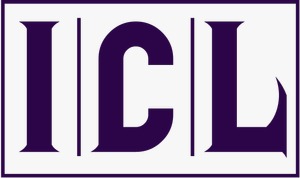A Corpus Based Vocabulary Analysis of Intermediate Book 1 used in the College of Punjab
Keywords:
Lexical profiling, Book One, Vocabulary items, Punjab textbook Board, AWL, GSLAbstract
This study is a corpus-based lexical analysis English Book-I (PTBB) used at the intermediate level in all the colleges of Punjab. It purports to explore academic words in text coverage and frequency distribution of those words. For conducting this study LexTutor (Vocabulary Profiler Software) is adopted to meet the objectives of the study. The findings of the study reflected that the AWL word families constitute only a small coverage (5.62%) of the lexemes used in the entire book. The analysis shows that many words in the textbook occur occasionally; hence, it would not be possible for the students to retain that vocabulary items to be used in their future linguistic repertoire. It also demonstrated that there is great variation in the number and selection of words across the book including that there do not seem to be a common thought behind word selection in textbooks. The result suggests that the number of academic word types must be increased to provide more favourable opportunities and a high degree of occurrence. The results also suggested to the core curriculum committee to revise the book thoroughly.
Downloads
References
Aftab, A., Sheikh, A., & William, I. (2014, June 30). Textbook Development in Pakistan and the United Kingdom. http://www.academicjournals.org/journal/IJEL/article-full-text-pdf/AEC295146671
Asghar, J. (2013). Change for the better: an evaluative study of a textbook. Language, Individual and Society, 7(1), 404 – 422.
Asghar, J. (2014). Review of Reading Goals in the National Curriculum of English Language (Grades 11-12) in Pakistan. Academic Research International Vol. 5(3)
Azim, M. U., Bhatti, A. M., Hussain, Z., & Iqbal, M. (2018). Culturally oriented textbooks and English Language Teachers. Hamdard Islamicus, 41(4), 301-317.
Azim, M. U., Hussain, Z., Bhatti, A. M. & Iqbal, M. (2020). Recycling of vocabulary in English Language Teaching: From theory to practice. Epistemology, 7(1), 88-102.
Bhatti, A. M., Parveen, S., & Ali, R. (2017). Integration of speaking and writing skills for better grades: perception of graduate students in Pakistani public sector colleges. International Journal of Research and Development in Social Science (IJRDS), 3(2). 1-14. http://doi.org/10.5281/zenodo.3987812
Chan, Y. J. (2000). A study of the development and trend of children English education and issues on teachers, materials, and methodology. Journal of National Taipei Teachers College, 13, 203-238.
Cunningsworth, A. (1996) Choosing Your Coursebook. Oxford: Heinemann.
Brown, C. (1993). Factors Affecting the Acquisition of Vocabulary: Frequency and Saliency of Words. In T.Huckin, M. Haynes, & J. Coady (Eds.), Second Language Reading and Vocabulary Learning (pp. 263-286). Norwood, NJ: Ablex.
Bunker, E. L. (1988). Towards comprehensive guidelines for the preparation of material in English for EFL adults with limited education (M.A. Thesis, Linguistics Department, Brigham Young University. Provo, Utah).
Dornyei, Z. (2007). Research method in applied linguistics. New York, NY: Oxford University Press.
Gay, L. R., Mills, G. E., & Airasian, P. W. (2012). Educational research: Competencies for analysis and applications. Boston: Pearson.
Islam, K. (2018). Gender stereotypes and education: A comparative content analysis of Malaysian, Indonesian, Pakistani and Bangladeshi school textbooks. https://www.ncbi.nlm.nih.gov/pmc/articles/PMC5774688
Laufer, B. (1998). The Development of Passive and Active Vocabulary in a Second
Language: Same or Different? Applied Linguistics, vol. 19:2, 225- 271.
Laufer, B., & Nation, I. S. P. (1995). Vocabulary size and use: Lexical richness in L2 written production. Applied Linguistics, 16(3), 307-322.
Mahmood, K. (2010, June). Textbook Evaluation in Pakistan: Issue of Conformity to the National Curriculum Guidelines. Retrieved from http://pu.edu.pk/images/journal/ier/PDF-FILES/2-Textbook_Evaluation-Amended_14-7-2010
Mahmood, K. (2011, December). Conformity to Quality Characteristics of Textbooks: The Illusion of Textbook Evaluation in Pakistan. Retrieved from http://ue.edu.pk/jrre/articles/52006
Mahmood, K. (2011, May). Standardization of textbook evaluation criteria through the development of quality textbook indicators.
McDonough, J. and Shaw, C. (1993) Materials and Methods in ELT: A Teacher’s Guide. London: Blackwell
McGrath, I. (2002) Materials Evaluation and Design for Language Teaching. Edinburgh: Edinburgh University Press.
Ministry of Education, Government of Pakistan, Islamabad. (2006). National Curriculum for English Language Grades I-XII 2006. Retrieved June 3, 2016, from http://www.itacec.org/document/nep09/Textbook_and_Learning_Materials_Policy_and_Plan_of_Action280607.pdf
Naseem, S., Shah, S. K., & Tabassum, S. (2015, July). Evaluation Of English Textbook In Pakistan: A Case Study Of Punjab Textbook For 9th Class - EA Journals.
Pakistan. National Education Policy Review Team, Federal Ministry of Education. (2006)
Parveen, S. (2011). Evaluation Of Curriculum At The Primary Level In Light Of Education Policies And Plans In Pakistan | Perveen | Journal of College Teaching & Learning.(TLC).https://www.cluteinstitute.com/ojs/index.php/TLC/article/view/4122/4177
Rahman, T. (2002). Language Ideology and Power: Language-learning among the Muslims of Pakistan and North India. Karachi: Oxford University Press.
Shah, J. and Inamullah, M. (2012). The Impact of Overcrowded Classroom on the Academic performance of the Students at Secondary Level. International Journal of Research in Commerce, Economics and Manag
Wilkins, D. A. (1972). Linguistics in Language Teaching. Cambridge: MFT Press.
Yang, I. L. (2006). On the issue of vocabulary size in English Teaching in Taiwan. Journal of the National Institute for Compilation and Translation,34(3), 35-44.
Downloads
Published
How to Cite
Issue
Section
License
Copyright (c) 2021 Competitive Linguistic Research Journal

This work is licensed under a Creative Commons Attribution-NonCommercial-NoDerivatives 4.0 International License.


